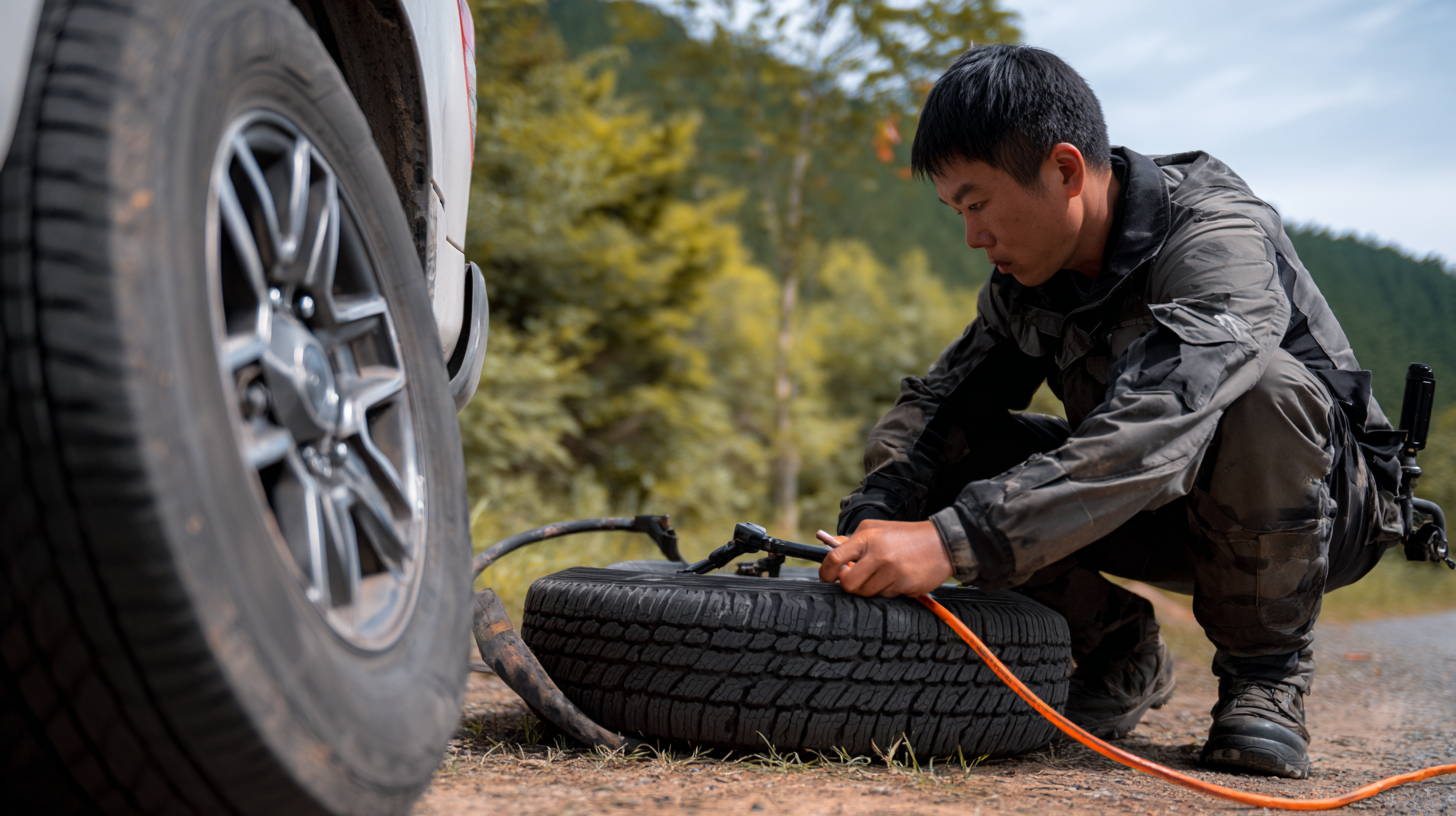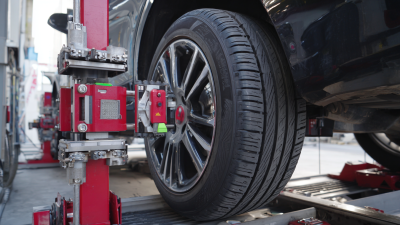Top 10 Effective Flat Tire Assistance Tips to Get You Back on the Road
When you're out on the road, the last thing you want is to face an unexpected setback like a flat tire. Being prepared for such situations is crucial, as it not only saves you time but also ensures your safety. Flat tire assistance can often mean the difference between a minor inconvenience and a major disruption to your travel plans. With the right knowledge and tools at your disposal, you can tackle this common issue effectively.
In this guide, we will share our top 10 effective flat tire assistance tips designed to equip you with the skills and confidence to handle a flat tire situation smoothly. From understanding the essential tools that every driver should carry to learning step-by-step procedures for changing a tire or utilizing roadside assistance services, these tips are aimed at making sure you are never left stranded. Whether you're a seasoned driver or a novice, our insights will help you navigate potential flat tire scenarios with ease, ensuring that you get back on the road swiftly and safely.

Essential Tools for Flat Tire Emergencies
When faced with a flat tire emergency, having the right tools on hand can make all the difference in getting you back on the road quickly and safely. According to a report by the National Highway Traffic Safety Administration (NHTSA), nearly 214,000 accidents each year are caused by flat tires, underscoring the importance of being prepared. Essential tools include a quality jack, tire iron, and a reliable air compressor. Keeping a portable tire inflator in your vehicle can save you time and provide peace of mind, especially in urban areas where roadside assistance may take longer to arrive.

In addition to these tools, it’s crucial to have a tire repair kit in your trunk. Most of these kits include rubber plugs, adhesive, and reamer tools to help you quickly address minor punctures. Another valuable tip is to regularly check your tire pressure and tread depth; the U.S. Tire Manufacturers Association advocates for monthly checks to avoid blowouts. An effective strategy in emergencies involves knowing how to use these tools confidently. Practicing changing a tire at home can significantly reduce stress and uncertainty when faced with an unexpected flat on the road.
Step-by-Step Guide to Changing a Flat Tire
Changing a flat tire can seem daunting, but with a step-by-step approach, you can handle it with confidence. First, find a safe location to stop your vehicle, away from traffic. Turn on your hazard lights and engage the parking brake to prevent any accidental rolling. Retrieve your spare tire, jack, and lug wrench from the trunk, as these are essential tools for the task.
Begin by loosening the lug nuts on the flat tire, but don't remove them completely yet. Once they’re slightly loosened, use the jack to raise your vehicle off the ground. Now, fully remove the lug nuts and take off the flat tire. Before mounting the spare, double-check that the spare is inflated and in good condition. Place the spare tire onto the hub, tighten the lug nuts by hand, and lower the vehicle back to the ground. Finish tightening the lug nuts in a crisscross pattern to ensure an even fit.
Always remember to check your spare tire pressure regularly and keep your tools organized for easy access in emergencies. Lastly, once your tire is changed, drive to a nearby service station to check on your flat tire and seek professional assistance if needed.
Top 10 Effective Flat Tire Assistance Tips
How to Use a Tire Repair Kit Effectively
Using a tire repair kit effectively requires understanding its components and following a systematic approach. First, ensure you have the necessary tools, typically including a tire plug, reamer, insertion tool, and possibly a sealant. Start by examining the tire for the puncture or leak; this is crucial as it informs your repair strategy. Once you've located the damage, prepare the puncture by inserting the reamer tool to clean and widen it, ensuring a snug fit for the tire plug.

After preparing the hole, gently insert the plug using the insertion tool, pushing it through the puncture until about two-thirds of the plug is inside the tire. This step may require a bit of force, so be steady and careful. Once in place, remove the insertion tool and trim any excess plug material sticking out of the tire. Finally, inflate the tire to the manufacturer's recommended pressure and check for leaks using soapy water over the repair area. Keeping a tire repair kit in your vehicle can empower you to handle emergencies quickly and efficiently, getting you back on the road with confidence.
Safety Precautions While Dealing with a Flat Tire
When dealing with a flat tire, safety should always be your top priority. Before attempting to fix the tire, ensure that you are parked in a safe location, away from traffic. Turn on your hazard lights to alert other drivers of your situation. It's crucial to stay calm and assess your surroundings before proceeding with any repairs.
One essential tip is to always use a jack stand when lifting your vehicle. This will provide additional stability and prevent accidents while you work on changing the tire. Additionally, consider placing reflective triangles or cones behind your vehicle to create a safe zone around your workspace. If you have a spare tire, ensure it is properly inflated and in good condition before attempting to use it.
Remember to keep a well-stocked emergency kit in your vehicle. It should include items like a flashlight, tire pressure gauge, and a basic first aid kit. Having these tools on hand can not only help you change a tire more efficiently but also ensure your safety throughout the process. By following these safety precautions, you can effectively address a flat tire and get back on the road with confidence.
When to Seek Professional Help for Tire Issues
When dealing with tire issues, knowing when to seek professional help is crucial for both safety and efficiency. If you experience a flat tire and find yourself unable to change it, or if the spare tire is also flat or unsuitable for use, it's imperative to call for assistance. Other warning signs such as unusual noises, vibrations, or a sudden loss of air pressure should also prompt you to consult a tire expert. Ignoring these signs could lead to further damage to your vehicle or, more importantly, compromise your safety on the road.
In addition to physical tire issues, tire maintenance concerns should not be overlooked. If your tires show uneven wear patterns, bulges, or cuts, these are indicators that professional evaluation is necessary. Furthermore, if you are unsure about the proper tire pressure for your vehicle or how to assess tread depth, seeking advice from a technician can help ensure that your tires remain in good condition. Ultimately, being proactive about tire health not only keeps you safe but also prolongs the life of your tires, saving you money in the long run.
Top 10 Effective Flat Tire Assistance Tips to Get You Back on the Road - When to Seek Professional Help for Tire Issues
| Tip Number | Assistance Tip | When to Seek Help |
|---|---|---|
| 1 | Check Tire Pressure | If consistently low, indicating a potential leak. |
| 2 | Inspect Tread Depth | If tread is worn down significantly, need replacement. |
| 3 | Look for Visible Damage | If there are cuts, cracks, or bulges on the tire. |
| 4 | Check for Loose Lug Nuts | If you hear a rattling noise or notice wobbling. |
| 5 | Use a Tire Repair Kit | If you have a small puncture that can be plugged. |
| 6 | Change the Tire If Needed | If the tire is too damaged for a repair. |
| 7 | Keep a Spare Tire on Hand | If frequent tire problems occur. |
| 8 | Know Your Vehicle’s Jacking Points | If you are uncertain about where to safely lift the car. |
| 9 | Call for Roadside Assistance | If you’re stranded or uncomfortable changing the tire yourself. |
| 10 | Schedule Regular Tire Maintenance | If you notice ongoing issues or signs of wear. |
Related Posts
-

The Ultimate Guide to Choosing the Perfect Car Tyres for Every Season
-

The Real Factors Influencing Tire Alignment Cost: What Every Car Owner Should Know
-

Unlock Amazing Savings: The Ultimate Guide to Car Tyres Offers You Can't Miss!
-

Discover the Best Local Tire Shops for Your Vehicle Needs Near You
-

Understanding Tire Alignment Cost: What Affects Pricing and Why It Matters for Your Safety
-

The Future of Tire Auto Technologies Shaping Driving Safety and Efficiency